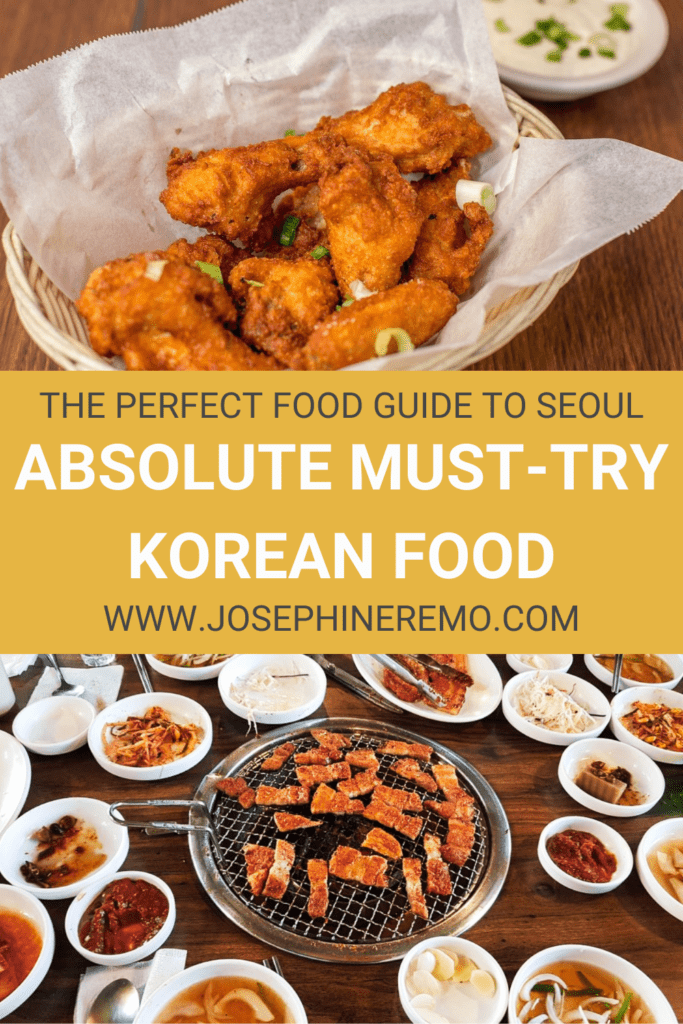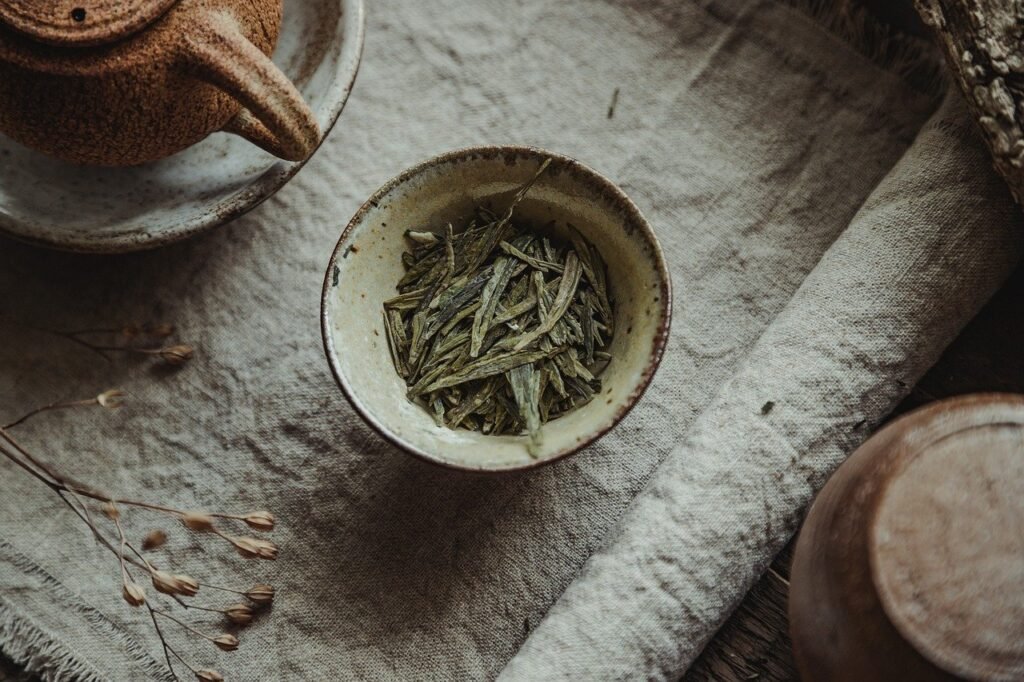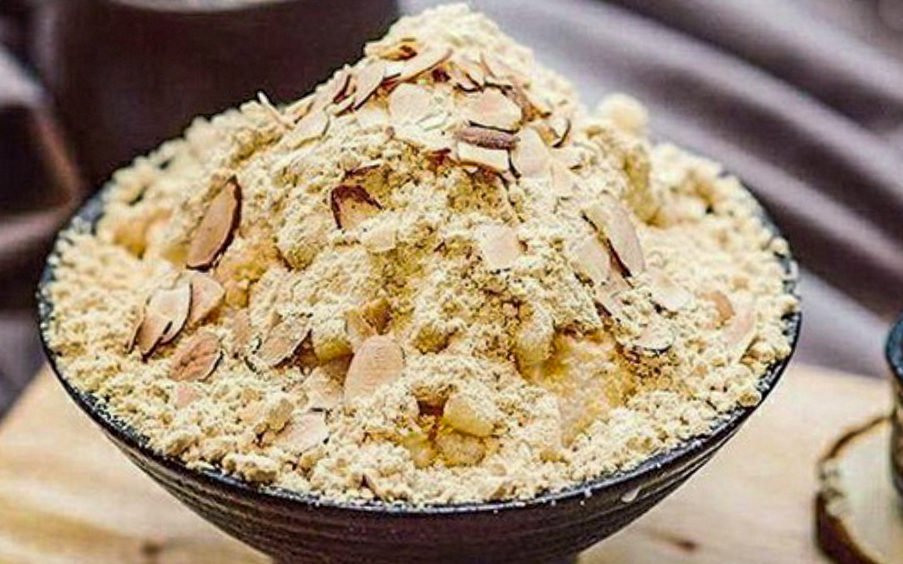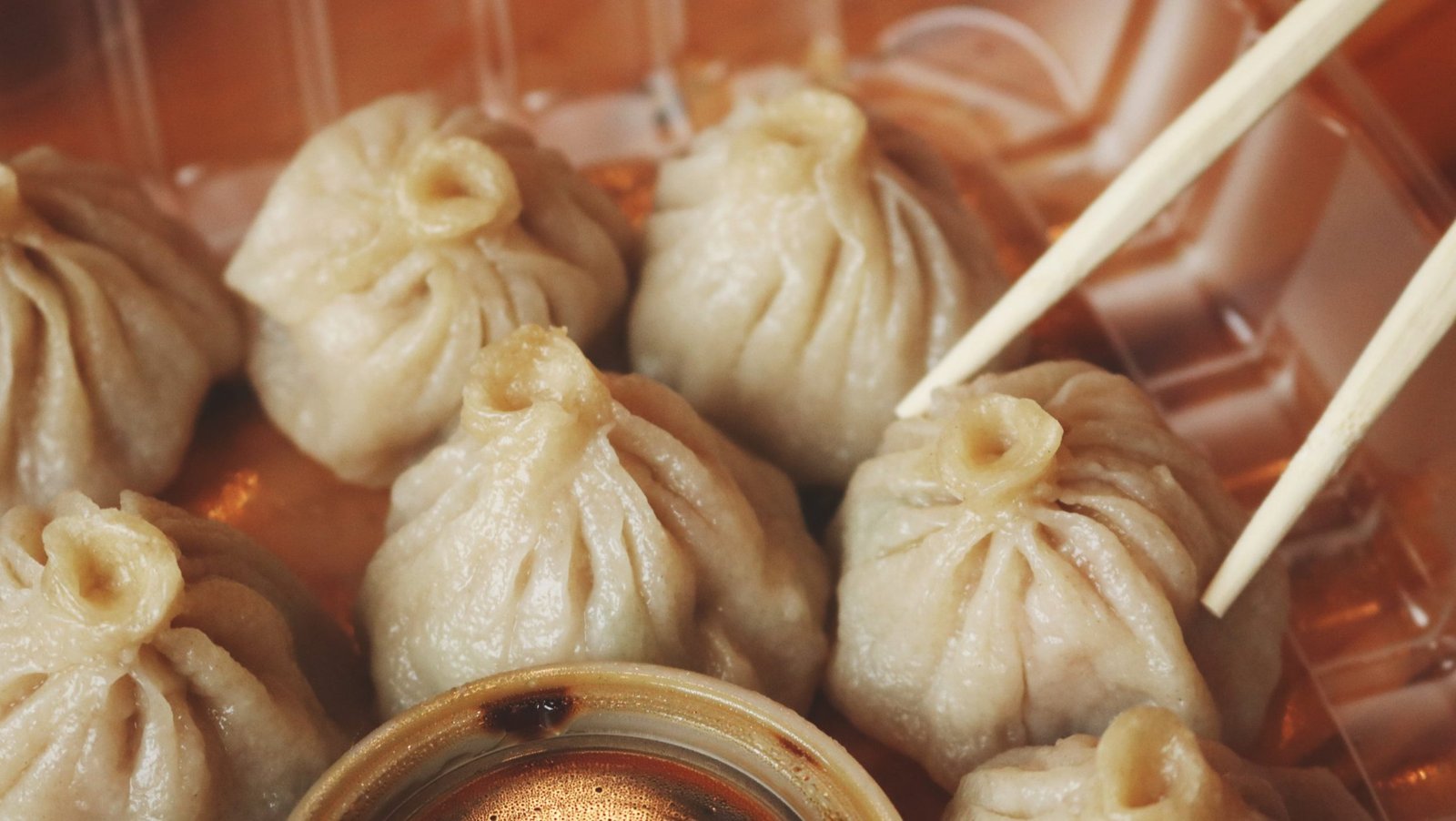Korean food culture is a massive part of society, and finding food in South Korea will probably be the least of your problems. The country has an insane amount of traditional Korean dishes to taste and places to go.
Honestly, food is such a massive culture in Korea and it will probably be the first thing Koreans will ask you about.
“Have you tried this and that?”
“Do you like Korean food?”
It is simply great, and insane at the same time, how obsessed this country is with eating!
However, differentiating between Korean food and knowing what to prioritize can be a little overwhelming. While in South Korea I advise you to try as many different things as possible, however, there are a few specifics that you absolutely must try and things you need to know about Korean food culture beforehand.
Let’s get down and deep into the food culture of Korea!



General About Korean Food Culture
When in South Korea, expect to eat out a lot.
In general, Koreans eat all their meals out and usually prefer it that way compared to eating at home.
Don’t ever expect to get an invite to eat at someone’s house. Instead, you can almost with 100% certainty expect to meet somewhere out for dessert, tea, or a meal and drinks.
In Korea, you share food which is a fun and very social experience. Usually, the meal will feature one large communal dish to share along with a bunch of side dishes.
“Banchan” is also widespread, which is smaller dishes or bites to share. An example could be bean sprouts, kimchi, pickled things, or salads for everyone around the table.
Finally, know that in South Korea you usually pair every traditional Korean dish with a type of alcohol.
This is a big part of the Korean food culture where a night out in Korea consists of visiting a variety of restaurants or “bars”. You simply head to one place after the other, enjoying something to eat alongside your alcoholic drink.
Beer, soju, and makgeolli are the most common kinds.
What Is Korean Food Culture?
Answering that question is not as straightforward as you might think. Korean food culture has many different faces and meanings.
Let’s break it down into different pieces!
The Traditional Korean Food Culture and Customs
The first thing you have to know is that much of the food that is widespread in Korea today, and all the unique customs around it originate from the royal cuisine and the many complex customs of that time.
Food in Korea is a careful study of balance regarding texture, color, temperature, and spiciness. The latter will probably surprise you, as everything in Korea can seem extremely spicy to foreigners.
In Korea, the typical Korean food culture is to have one main dish accompanied by numerous side dishes to share. All are carefully picked to complement each other.
How many side dishes are served varies depending on the dish and the more traditional Korean dishes will usually be accompanied by a lot. This can be anything from kimchi, fermented vegetables, pickled vegetables, Korean white rice, and many other things.
A typical Korean banquet is usually made of many different dishes cooked in various ways, including pan-fried, stewed, steamed, simmered, fermented, and even raw. The options and serving are truly endless and it is an experience in itself to watch all the plates being served in front of you.
Korean Foods’ Cultural Significance
Food in Korea plays a massive role in society and is probably the biggest social activity you’re going to find.
Korean people are out eating everywhere, food is widely discussed, YouTube channels around Korean food are massive, and food programs on TV very popular.
It’s not uncommon for Koreans to wait in line for hours or travel long distances to eat something specific.
On top, food has an important role in medicine in South Korea, and they use many exotic ingredients such as ginkgo, chestnut, pine seeds, persimmon, red dates, ginger, ginseng, and tangerine. I’d personally only heard of a few of those ingredients before heading to South Korea.
These all go into cooking and also in their many different types of brewed teas.
Main Servings
The main backbone of every meal in Korea is usually rice, but sometimes also replaced by noodles. Noodles in South Korea are almost a religion at some restaurants which usually make them by hand.
Over the years South Korea has also become famous for the many types of ramen noodles (what I would know as 2-minute noodles back home), and even the smallest convenience stores will have a wide selection.
If you are a vegetarian in South Korea you will generally have a difficult time figuring out what to eat, since every meal usually includes meat or fish – even breakfast.
Pork is very popular in Korea, but they eat a lot of every animal.
Since South Korea is a peninsula, you also find a lot of seafood around.
Side Servings
A thing that Koreans are exceptionally famous for, is the perfected craft in terms of preserving food. Many side dishes are fermented, salted, pickled, and spicy.
The most common and well-known one is kimchi which is served at every meal. Kimchi alone has more than 100 different varieties and is prepared with cabbage accompanied by different vegetables.
Fermented foods are both delicious and are also a well-known healthy digestive aid.
Along with the many side dishes being served you also have many different sauces to go with your meal. These usually consist of sesame and sesame oil, soy sauce, garlic, chili paste, ginger, soybean paste, and chili flakes.
Sounds awesome, right?
Korean Dessert Culture
Many people don’t know it, but desserts are a huge and popular thing in South Korea.
You find a ton of different cafes serving coffee, teas, cakes, and other types of desserts, and they are usually packed.
Dessert is normally accompanied by tea and is carefully designed in terms of color, presentation, and taste.
While some might be similar familiar dishes from back home, others are unique and made from sweet beans or glutinous rice.
Dasik, Hodo-gwaja, Chapssaltteok, Hotteok, Gotgamssan, and Bingsu are some of the best and most popular ones.
The Most Popular Servings
The most famous and traditional Korean food, which is also widespread all over South Korea, is Korean BBQ.
Korean BBQ restaurants are usually an extremely traditional, simple, and fun experience.
Every table has its own charcoal grill and a suction above to get rid of any smoke. Some places will even put your jackets in plastic bags to make sure that you don’t leave the place smelling like a barbecue.
The meal consists of paper-thin slices of marinated beef (bulgogi), pork belly (don’t get scared this is not actually stomach), or beef ribs which have been grilled and cut out right in the middle of your table.
You eat your perfectly caramelized pieces of meat, wrapped in lettuce leaves with garlic, chili, and soybean pasta – yum!
Another very traditional and typical serving in Korean cuisine is ginseng chicken soup. Here you have a whole chicken stuffed with garlic, ginseng, rice, and jujube. Then boiled and served in a clear soup cooked with seaweed and a ton of other things.
Besides looking quite impressive it’s also very tasty.
Unique and Modern Korean Food Culture
There are two extra and unique things to know about Korean food culture.
First, in many places, you will have a small button on your table that rings a bell and/or flashes a light. Using this will call the waiter/waitress and this is considered very normal and perfectly polite.
I felt a little awkward in the beginning but ended up loving the concept as it is extremely convenient for both you and the people working.
Next, you want to know that Koreans slurp their food A LOT.
Especially when it comes to noodles and soup there is a specific noodle slurping culture. Though it might be a bit distracting it is very common and is a sign that you are enjoying your meal.
If you want to be polite, slurp away my friend!
What to Expect From Eating in Korea
To sum up what I wrote above and to add something more, I want to share what you can expect in an everyday meal.
Your meal will usually consist of one or more main dishes, rice or noodles, accompanied by a wide variety of side dishes. Expect to have a serving of either pork, chicken, beef, or fish.
Main dishes will vary from soups, pot-stews, rice dishes, and much more, seasoned with scallions, chili, garlic, soy sauce, sesame oil, and chili powder.
Along with side dishes you will also have different sauces accompanying your meal.
So far so good?
Let’s talk about one of my favorite things – Korean street food!
Korean Street Food Culture

Besides having a very strong food culture in terms of different types of traditional Korean foods, South Korea is also famous for its street food.
You find street food in South Korea at food vendors or at big street food markets specializing in different things. Not only are street food options a part of the Korean food culture, but they are also delicious and make for a cheap meal.
From sweet to savory, you can find all sorts of different foods in a street food format in South Korea.
The best and most widespread varieties are mandu (dumplings), fishcake, mung bean pancakes, Korean fried chicken, gimbap, ttekbokki (spicy rice cakes), and fried snacks.
Korean Tea Culture

Like a lot of other different Asian cultures, tea plays a very big part in South Korea.
Since ancient times, Korean people have been using tea as a side serving for their meals, as a digestive aid, medicine, or even for meditative purposes.
Their traditional Korean tea ceremonies are quite comprehensive and can take a long time depending on where you are.
You find traditional tea houses in most cities and popular tea shops all around.
Tea can be an expensive and fancy part of Korean culture and is considered a great present.
Food to Eat in South Korea
Korean BBQ

The first one is a given, and as you could expect, Korean Barbeque is the number one. You simply can’t have gone to South Korea and not visited a Korean BBQ restaurant! Except of course only if you are vegetarian…
You find these restaurants everywhere and they are such a great, cool, and fun experience. Usually, every table will have its own little grill with a hood above, and this is how you can scout a BBQ place from the outside.
Your meal should go alongside both Soju and beer. Soju also works great for cleaning your tastebuds while eating. In terms of Korean food – Korean BBQ would be the biggest go-getter and show-stopper.
KFC

… no I don’t mean the fast-food chain because, in South Korea, KFC stands for Korean Fried Chicken. Fried chicken is like a religion to South Koreans and they truly have perfected this craft. This will probably be the best serving of fried chicken you will ever have in your life.
There are numerous restaurants and chains (called Chimeaek restaurants) that specialize in fried chicken. To name a few good chains both, BHC Chicken and Kyochon are very good.
Order a mix of original and spicy and enjoy your free snacks and pickled vegetables on the side – this is usually all they serve! At first, I wrinkled my nose and thought “You can´t call this a meal!” Cut to me being reborn, baptized, and awoke as a KFC worshipper.
Finally note that KFC should always come with a massive, ice-cold beer!
Korean Pancakes

I hadn’t heard of this one before going to South Korea, but Korean pancakes, or Pajeon, became one of my favorite things to eat in South Korea. Usually, they are cooked with scallions and my favorite is the seafood scallion or kimchi ones.
Often, a Korean pancake house is a smaller, cozy, and traditional restaurant that feels like stepping into a bit of old Asia – away from the modern Asian chaos outside.
The second best thing right after the pancake itself is the makgeolli it should be served with. This is a milky-white, fermented, slightly sparkling rice wine that will have you a little confused. I loved the drink but it is quite different and is nonetheless something you should try when in South Korea.
Bingsu

When I think about Korean food I usually don’t think about dessert. I now know that someone told me lies in my ENTIRE life.
Koreans are great in terms of desserts and this dessert is a very different, fun, and delicious thing. It is a serving of shaven ice, which comes with a variety of different toppings, that usually comes in a massive bowl to share with friends.
I recommend getting the original bean one. It might sound weird but, as mentioned further above, a lot of Korean desserts are made from beans and this caramel-colored type of bingsu is great!
Mandu

Or maybe more commonly known as dumplings, is a very popular and absolutely mouthwatering thing to have in South Korea. There are a bunch of places that serve these little babies. The many small stalls around make them great for an afternoon snack.
Noodles

Noodles are, as mentioned earlier, another religion to Koreans. Even the ramen noodles you get at the 7/11 or other convenience stores, are better than what you get back home.
Find a restaurant that specializes in noodles and try to aim for either soup, hand-pulled noodles, or black bean noodles.
Also, don’t miss out on trying Korean cold buckwheat noodles – they look a little slimy and seaweedy but they are really tasty, chewie, and awesome.
Tteokbokki
This street food is a dish made of spicy stir-fried rice cake in a hot red sauce. Rice cake is a specific and fun sensation that I think you should at least try as an afternoon snack.
You find it at small side booths when walking around or at the street food markets.
Hotteok
A small street food dessert that will boost your blood sugar for an hour or two.
It’s a fried thick pancake that has both mungbean, nuts, and honey inside – I’ll take two!
Raw Octopus

This last one is an extra free one for the bold and daring. Those who want to experience Korean food culture in its most shocking corner. The ones who are in for a serious challenge and are not afraid to even risk their lives a little.
Okay, that is a bit dramatic but actually, several people choke yearly because they panic.
The key here is to CHEW!
The restaurant pulls it out of the tank, directly chop it into mouth-sized pieces, and puts it on a plate. They sprinkle it with a little sesame oil and green leaves – and voilà – you have a plate of still-moving octopus right in front of you.
The nerves in the tentacles make the pieces wiggle around and the suckers stick to the plate. You eat it raw and this is where you have to be sure to chew! Preventing the suckers from sticking to your throat on the way down!
To me, this was more entertaining than gastronomical, but on top of being extremely amusing, the serving of raw octopus is quite tasty.
Final Thoughts on Korean Food Culture
That was everything in terms of Korean food culture and the must-tries while in South Korea!
Eating in Korea truly was my all-time favorite activity! So I hope you have fun and get to experience the great food options around.
If you are visiting Seoul, read my ultimate Seoul guide and the best places to stay in the city.
Thank you for reading and as always feel free to leave a comment below.
//Josephine
BEST TRAVEL RESOURCES
BOOK YOUR FLIGHT:
Not sure how to get the best and cheapest flights? Use Skyscanner for the best deals. The great tip is to be flexible with dates and destinations if you want the best deals.
Alternatively, get a membership with Wayaway and receive a cashback on cheap flights and hotels every time you book! Via the link, you even get a 10% discount on your membership.
BOOK GREAT ACCOMMODATION:
Booking great accommodation is not difficult, but it sucks overpaying. Use Booking.com for the greatest hotel deals and Hostelworld for amazing hostel stays. Also, sign up for Worldpackers to get FREE accommodation in exchange for work.
BEST TRAVEL INSURANCE:
Traveling without insurance is a mistake that you shouldn't make - trust me, I’ve done it. I suggest SafetyWing since they offer great and flexible policies - especially for long-term traveling or for digital nomads. World Nomads is the best insurance with extensive coverage.
NEED HELP WITH YOUR VISA?
Figuring out how and when you need a visa can be a bit of a jungle. iVisa is a very handy and user-friendly service.
HAS YOUR EU FLIGHT BEEN DISRUPTED?
Use AirHelp as a service to get flight compensation on your European flights in case your flight was delayed, canceled, or disrupted in other ways. Often you are actually entitled to compensation!
DO YOU NEED A LOCAL SIMCARD FOR YOUR TRIP?
Airalo has affordable rates for local eSIM solutions in more than 200 different destinations. Stay easily connected on your trip!


The korean culture related to food is amazing, thanks for sharing the information with us. Subscribed your blog.
That’s awesome – Thank you! 🙂